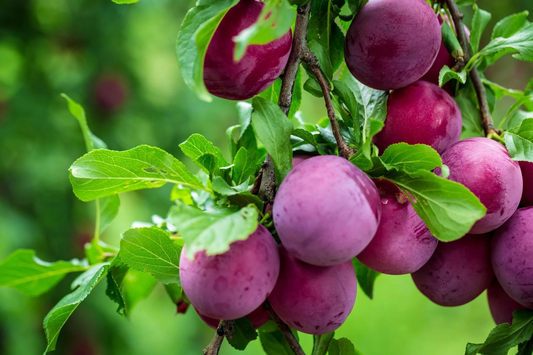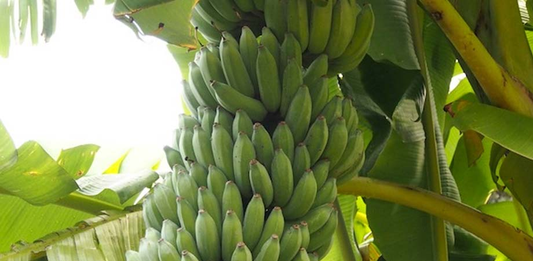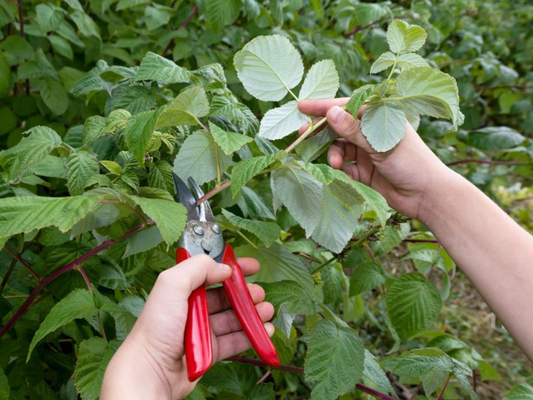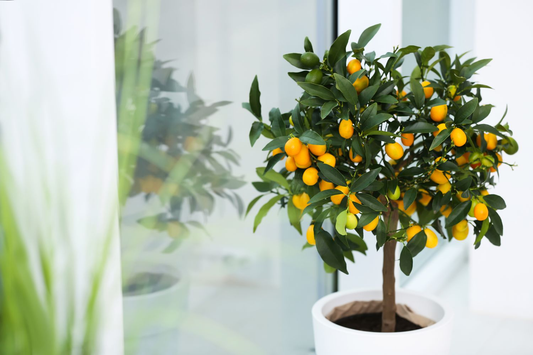How to Grow Radishes Indoors: A Beginner’s Guide to Fresh, Crunchy Snacks!
Share
1. Introduction
Radishes are one of the fastest-growing vegetables, making them a perfect choice for indoor gardening. Whether you're a seasoned gardener or a complete beginner, growing radishes indoors offers a variety of benefits. These crunchy, peppery vegetables are not only easy to cultivate but also a great addition to your kitchen, allowing you to enjoy fresh produce year-round. In this guide, we'll explore why growing radishes indoors is a smart choice and how you can successfully cultivate them in your own home.
Benefits of Growing Radishes Indoors
- Fresh Produce All Year Long: Growing radishes indoors ensures a constant supply of fresh, crisp radishes, no matter the season. With proper care, you can harvest them in just 3-4 weeks.
- Space-Saving: Indoor gardening allows you to grow vegetables even if you have limited outdoor space. Radishes require minimal space, making them ideal for small apartments or kitchens with little room for traditional gardens.
- Cost-Effective: Purchasing fresh radishes can get expensive, especially if you’re looking for organic options. By growing them indoors, you save money on store-bought produce while also knowing exactly how your radishes were grown.
- Low Maintenance: Radishes are among the easiest vegetables to grow indoors, requiring minimal attention once you've set up the right conditions.
- Health Benefits: Radishes are packed with vitamins and minerals, particularly Vitamin C, and are known for their digestive benefits and low-calorie content.
General Requirements for Indoor Radish Growth
- Light: Radishes need about 4-6 hours of direct or indirect sunlight. If you don’t have enough natural light, you can supplement with grow lights.
- Temperature: Ideal indoor temperature for growing radishes is between 55°F and 75°F (13°C to 24°C).
- Container: Choose containers with good drainage, at least 6 inches deep to accommodate the root system of radishes.
- Soil: Use well-draining, fertile potting soil for optimal growth.
- Watering: Keep the soil consistently moist but not soggy. Radishes require regular watering, especially during the growing season.
- Air Circulation: Good air circulation is crucial to prevent mold or mildew growth in a closed indoor space.

2. Why Grow Radishes Indoors?
Growing radishes indoors offers several compelling reasons to bring this fast-growing vegetable into your home garden. Radishes are one of the easiest and most rewarding crops to grow indoors, making them a perfect choice for those who want to enjoy fresh produce throughout the year, even in small living spaces.
Advantages of Indoor Gardening for Radishes
- Year-Round Harvesting: One of the major benefits of growing radishes indoors is the ability to harvest them all year round. With proper lighting and temperature control, you can enjoy fresh radishes in any season, avoiding the limitations of outdoor growing seasons.
- No Dependency on Outdoor Weather Conditions: Indoor gardening allows you to grow radishes without worrying about the unpredictability of outdoor weather, such as extreme temperatures or heavy rainfall. You can control the environment to ensure optimal growing conditions.
- Ideal for Apartment Dwellers or Small Spaces: Radishes are compact plants that require little space, making them ideal for people living in apartments, condos, or homes with limited outdoor space. Indoor gardening allows you to utilize windowsills, countertops, or small corners for planting.
Radishes' Suitability for Indoor Growing
- Fast-Growing: Radishes are known for their rapid growth cycle. Typically, they mature in 3 to 4 weeks, allowing you to enjoy a quick harvest, making them ideal for impatient gardeners.
- Compact Size: Radishes do not require a lot of space to grow, as their root systems are small and compact. This makes them well-suited for container gardening, even in small spaces like kitchens and apartments.
- Low-Maintenance: Compared to other vegetables, radishes are relatively low-maintenance. They require minimal attention, making them perfect for beginners or those with busy lifestyles.
Environmental Benefits of Growing Your Own Food Indoors
- Reduces Carbon Footprint: By growing radishes indoors, you reduce the need for transportation of store-bought produce, lowering your carbon footprint. Indoor gardening contributes to a more sustainable lifestyle.
- Decreases Food Waste: Growing your own food allows you to harvest only what you need, reducing food waste. Radishes grow quickly, so you can enjoy fresh produce in a short amount of time without worrying about spoilage.
- Improves Indoor Air Quality: Indoor plants, including radishes, help purify the air by absorbing carbon dioxide and releasing oxygen, contributing to a healthier indoor environment.
3. What You Need to Grow Radishes Indoors
Growing radishes indoors requires some basic materials and tools to create the ideal environment for your plants. With the right setup, you'll be on your way to enjoying fresh radishes in no time. Below, we’ll break down the essential materials and supplies you’ll need to get started.
Essential Materials
-
Containers:
- Choose containers that are at least 6 inches deep to allow enough space for the radish roots to grow.
- Ensure containers have good drainage holes to prevent water from accumulating and causing root rot.
- Plastic, ceramic, or terracotta pots are all suitable options as long as they provide adequate drainage.
-
Quality Potting Soil:
- Use a well-draining, nutrient-rich potting mix to promote healthy radish growth.
- A mix designed for vegetables or herbs is ideal, as it will have the right balance of nutrients and drainage.
- Radishes prefer slightly acidic to neutral soil, with a pH between 6.0 and 7.0.
-
Light Sources:
- Natural Lighting: Place your containers near a south-facing window where they can get at least 4-6 hours of direct sunlight per day.
- Artificial Lighting: If natural light is insufficient, use LED or fluorescent grow lights to provide the necessary light spectrum for your radishes. Aim for about 12-16 hours of light per day.
-
Temperature and Humidity Control:
- Radishes thrive in temperatures between 55°F and 75°F (13°C to 24°C). Keep your indoor space within this range.
- Radishes need a moderate level of humidity. If your home is very dry, use a humidifier or mist the plants occasionally to maintain moisture in the air.
-
Radish Seeds:
- Choose varieties that are well-suited for indoor gardening, such as "Cherry Belle" or "Easter Egg" radishes, known for their quick growth and compact size.
- Look for organic, non-GMO seeds for the best results and to avoid any harmful chemicals in your radishes.
Tools and Supplies
- Plant Labels: Use plant labels to keep track of your planting dates and the varieties of radishes you’re growing.
- Watering Can and Spray Bottle: A watering can with a gentle spout is useful for watering radishes, while a spray bottle helps maintain the right level of moisture in the soil and air.
- Grow Lights (if necessary): If you don't have enough natural sunlight, investing in grow lights is essential to ensure your radishes get the light they need to thrive.
-
Fertilizers and Amendments:
- Organic Options: Use organic compost or a balanced organic fertilizer to feed your radishes naturally, encouraging healthy growth.
- Synthetic Options: Synthetic fertilizers can also be used, but they should be applied sparingly to avoid over-fertilizing, which can lead to poor root development.
4. Choosing the Best Radish Varieties for Indoor Growth
When selecting radish varieties to grow indoors, it’s important to consider factors like growth time, size, taste, and space requirements. Some radish varieties are better suited for small indoor spaces due to their compact size and shorter growth cycles, while others may require more space and longer growing times. Below is a comparison of popular radish varieties to help you make the best choice for your indoor garden.
Radish Variety Comparison Table
| Variety Name | Growth Time | Size | Taste | Best for Indoor Growing |
|---|---|---|---|---|
| Cherry Belle | 20-30 days | Small | Mild | Yes |
| French Breakfast | 25-35 days | Medium | Peppery | Yes |
| Daikon | 40-60 days | Large | Spicy | Limited for indoors |
| White Icicle | 30-40 days | Long | Mild | Yes |
Tips for Choosing the Right Radish Variety
- Available Space: If you're growing in small containers or have limited space, consider compact varieties like Cherry Belle or French Breakfast. These grow well in smaller pots and require less room for root expansion.
- Growing Time: If you want a quick harvest, go for fast-growing varieties like Cherry Belle, which matures in just 20-30 days. For those with more time or who want larger radishes, varieties like Daikon may be suitable, though they require more space and a longer growing period.
- Flavor Preference: Choose the variety based on your flavor preference. French Breakfast offers a peppery taste, while Cherry Belle and White Icicle have milder flavors. If you enjoy spicier radishes, Daikon may be the best choice, though it may not be as suited for small indoor spaces.

5. Step-by-Step Guide: How to Grow Radishes Indoors
Growing radishes indoors can be a rewarding and easy process if you follow the right steps. This step-by-step guide will walk you through everything you need to do, from selecting the right container to harvesting your fresh, crunchy radishes. Let’s get started!
Step 1: Selecting the Right Container
-
Recommended Sizes and Types of Containers:
- Choose containers that are at least 6 inches deep to allow radish roots to grow properly.
- Containers should be wide enough to accommodate the number of radishes you plan to grow.
- Plastic, ceramic, or terracotta pots are all good options as long as they have drainage holes.
-
Importance of Drainage:
- Proper drainage is crucial to prevent water from accumulating at the bottom of the container, which can lead to root rot.
- Ensure that the container has at least one drainage hole at the bottom. You can also add a layer of gravel at the bottom for extra drainage.
Step 2: Preparing the Soil
-
Best Soil Mixture for Radishes:
- Use a well-draining potting mix that is light and airy. Radishes prefer soil that drains well and doesn't become compacted.
- Consider adding a bit of sand or perlite to the mix to improve drainage and prevent the soil from becoming too dense.
-
How to Prepare the Container:
- Ensure the container has drainage holes before adding soil.
- Fill the container with the prepared soil, leaving about an inch or two of space from the top of the container to allow for watering.
Step 3: Sowing the Radish Seeds
-
Correct Planting Depth:
- Plant the radish seeds about 1/2 inch deep into the soil.
- Gently cover the seeds with a light layer of soil after placing them in the planting holes.
-
Spacing Requirements for Optimal Growth:
- Space the radish seeds about 1 inch apart. This gives the roots enough space to grow without crowding each other.
- If you are growing multiple radishes in one container, ensure there is at least 2-3 inches between each seed to allow for proper root development.
-
How Many Seeds to Plant:
- Plant 2-3 seeds per spot in case some seeds do not germinate. After they sprout, thin the seedlings to the strongest one.
Step 4: Providing Adequate Lighting
-
How Much Light is Necessary:
- Radishes need at least 4-6 hours of direct sunlight per day. If you're growing indoors, make sure to place them near a south-facing window for optimal light exposure.
- If natural sunlight is insufficient, you may need to supplement with artificial lighting.
-
Tips for Using Artificial Lights:
- Use LED grow lights or fluorescent lights that emit the correct light spectrum for plant growth.
- Set the grow lights to run for 12-16 hours a day to mimic sunlight and encourage healthy growth.
-
Benefits of Natural Sunlight:
- Natural sunlight provides the best light for radishes and is the most energy-efficient option.
- Ensure that your plants are positioned where they will receive consistent sunlight, such as near a window that faces south or west.
Step 5: Watering and Moisture Control
-
How to Water Without Overwatering:
- Water the radishes when the top inch of the soil feels dry. Avoid letting the soil become waterlogged, as this can lead to root rot.
- Water gently, ensuring the water doesn’t wash away the soil or disturb the seeds.
-
Signs of Underwatering vs. Overwatering:
- Underwatering: Leaves will become wilted, and the soil will be dry to the touch.
- Overwatering: Leaves may yellow, and the soil will feel soggy or overly wet.
-
Humidity Needs for Radishes:
- Radishes prefer moderate humidity levels. If the air in your home is very dry, consider misting the plants occasionally to maintain moisture.
Step 6: Temperature and Care Requirements
-
Ideal Temperature Ranges for Radish Growth:
- Radishes grow best in temperatures between 55°F and 75°F (13°C to 24°C). Avoid temperatures that are too high or too low, as they can stunt growth.
-
How to Keep the Indoor Temperature Stable:
- Keep your radishes away from drafts, heaters, or air conditioners, as temperature fluctuations can negatively affect growth.
-
Managing Temperature Fluctuations:
- If your home temperature is not ideal, consider using a space heater or fan to stabilize the temperature around your plants.
Step 7: Harvesting Your Radishes
-
How to Tell When Radishes Are Ready to Harvest:
- Radishes are ready to harvest when they have reached their full size, which typically takes 20-40 days depending on the variety.
- Gently pull the radish from the soil. The roots should be firm and crisp.
-
Harvesting Tips for Tender, Crisp Radishes:
- To harvest, gently pull the radishes from the soil, being careful not to damage the roots.
- Harvest radishes early for smaller, tender roots, or leave them a little longer for larger, more mature radishes.
-
How to Avoid Overcrowding and Maintain Plant Health:
- Thinning the seedlings to the healthiest plants will prevent overcrowding and allow the remaining radishes to grow without competition for nutrients.

6. Common Problems When Growing Radishes Indoors
Growing radishes indoors can be a rewarding experience, but it also comes with its share of challenges. Below are some common issues that indoor radish growers face and solutions to help overcome them.
Pests and Diseases
-
Common Indoor Pests:
- Aphids: These small, soft-bodied insects feed on the sap of plants and can cause yellowing leaves and stunted growth.
- Whiteflies: Whiteflies are tiny flying pests that often gather on the underside of leaves, sucking out the plant's nutrients and causing leaf yellowing.
-
How to Prevent and Treat Pests Organically:
- Regularly inspect plants for signs of pests such as yellowing leaves or small bugs. Catching infestations early can prevent them from spreading.
- Use neem oil or insecticidal soap to treat pests. Apply these products every 7-10 days, depending on the severity of the infestation.
- Introduce beneficial insects like ladybugs or praying mantises, which can help control pest populations naturally.
Plant Issues
-
Yellowing Leaves:
- Yellowing leaves can be a sign of a lack of nutrients or improper watering.
- If the soil lacks nutrients, consider adding an organic or balanced fertilizer to replenish it.
- Check for overwatering or underwatering; radishes prefer moist but not overly saturated soil.
-
Stunted Growth:
- Stunted growth might result from poor lighting, improper spacing, or temperature fluctuations.
- Ensure that your radishes receive 4-6 hours of light per day, either from sunlight or artificial grow lights.
- Keep temperatures between 55°F and 75°F (13°C to 24°C) to promote healthy growth.
-
Causes of Bolting (Flowering Too Early) and How to Avoid It:
- Bolting often occurs when radishes are exposed to long periods of light or sudden temperature changes.
- To avoid bolting, maintain a consistent indoor temperature and ensure the radishes have access to sufficient light. This will keep them in the vegetative stage longer.
- Choose radish varieties with shorter growing times if you’re concerned about bolting.
-
Root Issues (Not Growing Large, Underdeveloped Roots):
- Radishes may not grow large or may produce underdeveloped roots if the soil is too compact or dense.
- Use a light, well-draining potting mix that allows for easy root development.
- Ensure the radishes have enough space to grow by spacing seeds adequately and thinning out the seedlings once they’ve sprouted.
Environmental Factors
-
Managing Low Light Levels and Temperature Fluctuations:
- Radishes require at least 4-6 hours of direct sunlight daily. If natural light isn’t sufficient, use grow lights to supplement.
- Ensure that temperatures remain stable, ideally between 55°F and 75°F (13°C to 24°C), to prevent stress on the plants.
-
Solutions for Poor Air Circulation or High Humidity:
- Radishes prefer moderate humidity, typically around 50-60%. If the air in your home is too humid, consider increasing air circulation by opening windows or using a fan.
- If the air is very dry, you can mist the plants with water or place a small humidifier nearby to maintain optimal conditions.
- Avoid placing plants near drafty areas or air conditioning units, as sudden temperature changes can stress the radishes.

7. Maximizing Indoor Radish Yield
Maximizing your indoor radish yield requires thoughtful planning, space optimization, and using innovative growing methods. Here are some techniques to help you grow more radishes in less space and extend your harvest season.
How to Optimize Space for Multiple Radish Containers
-
Vertical Gardening:
- Use shelving units or stacked containers to make the most of vertical space. This allows you to grow multiple radish plants without occupying too much floor space.
- Ensure each container has adequate light, either from natural sunlight or artificial grow lights, for optimal growth.
-
Compact Containers:
- Choose shallow, wide containers rather than deep ones. Radishes do not require deep soil, and this will allow you to fit more containers in the same space.
- Consider using repurposed containers, such as plastic trays or large planter boxes, to save space while maximizing planting area.
Companion Planting Indoors
-
Radishes and Herbs:
- Plant radishes alongside fast-growing herbs like basil, cilantro, or parsley. These herbs can help repel pests and attract beneficial insects, enhancing the health of your radishes.
- Radishes’ shallow root systems do not compete much with herbs, making them a perfect companion for small indoor herb gardens.
-
Radishes with Greens:
- Consider planting radishes alongside leafy greens like spinach or lettuce. These greens grow quickly and can be harvested early, creating more room for radishes to thrive.
- Radishes and greens have similar light and moisture requirements, making them a compatible indoor growing duo.
Using Hydroponic Methods for Indoor Growing
-
What is Hydroponics?
- Hydroponic growing involves growing plants in a water-based solution, rather than soil. This method allows you to grow radishes indoors without the mess of soil and can increase yields with faster growth.
-
Hydroponic Systems for Radishes:
- Use systems like nutrient film techniques (NFT) or deep water culture (DWC), which allow for efficient nutrient delivery to radish roots.
- Hydroponics provides consistent moisture and nutrient levels, reducing the risk of overwatering or underwatering.
-
Benefits of Hydroponics for Radishes:
- Faster growth rates and potentially higher yields due to optimized nutrient delivery and water efficiency.
- Less space required for growing, as hydroponic systems can be set up vertically or stacked, making them perfect for small indoor spaces.
Techniques to Extend the Growing Season and Increase Yields
-
Succession Planting:
- To maximize your indoor radish yield, practice succession planting by sowing new seeds every 7-10 days. This ensures a continuous supply of radishes, with plants maturing at different times.
- Choose fast-growing radish varieties, like 'Cherry Belle' or 'French Breakfast,' for quicker harvests and more frequent planting cycles.
-
Rotating Crops:
- Rotate radish crops with other indoor vegetables, such as spinach or lettuce, to prevent soil depletion and keep plants healthy.
- By rotating crops, you can manage pest control, avoid soil compaction, and optimize the use of indoor garden space.
8. Benefits of Growing Radishes Indoors
Growing radishes indoors offers a range of benefits, from health advantages to environmental and economic perks. Here’s why you should consider adding radishes to your indoor garden.
Health Benefits of Fresh Radishes
- High in Vitamin C: Radishes are an excellent source of vitamin C, which helps boost the immune system and supports skin health.
- Low in Calories: Radishes are a low-calorie vegetable, making them a great choice for weight management and overall healthy eating.
- Digestive Aid: Rich in fiber, radishes support digestion and promote a healthy gut. Their water content also helps in maintaining hydration.
Environmental and Cost Benefits of Growing Your Own Food Indoors
- Environmental Impact: Growing radishes indoors reduces your carbon footprint since you’re not relying on store-bought produce that has been transported long distances.
- Cost Savings: Growing your own radishes indoors means you can enjoy fresh produce year-round without spending money on store-bought vegetables.
The Joy and Satisfaction of Harvesting Your Own Crunchy, Fresh Radishes
- Personal Satisfaction: There’s a unique joy in harvesting food that you’ve nurtured yourself. Eating homegrown radishes adds a sense of accomplishment and pride.
- Flavor and Freshness: Freshly harvested radishes are crunchier, juicier, and more flavorful than store-bought varieties, making your dishes more enjoyable.

9. Troubleshooting: Solving Common Growing Issues
Growing radishes indoors is generally straightforward, but occasionally, you may encounter some challenges. Here are solutions to common growing issues that can affect your radishes.
1. Addressing Slow or Poor Germination
- Check Seed Quality: Ensure you are using fresh, viable radish seeds. Old or improperly stored seeds may have reduced germination rates.
- Proper Temperature: Radish seeds need a temperature range of 55°F to 75°F (13°C to 24°C) to germinate effectively. Ensure the environment is within this range.
- Moisture Levels: Keep the soil consistently moist but not soggy. Dry soil can hinder seed germination.
- Planting Depth: Make sure seeds are planted at the correct depth (about 1/2 inch deep). Planting too deep can delay germination.
2. Solutions for Leggy Plants (Insufficient Light, Overcrowding)
- Provide More Light: Radishes need at least 6-8 hours of light per day. If natural light is insufficient, use grow lights to ensure adequate lighting.
- Proper Spacing: Avoid overcrowding by planting radish seeds with enough space to grow. Thin seedlings to at least 1 inch apart.
- Maintain Light Distance: Keep grow lights close to the plants (about 2-4 inches above them) to avoid legginess caused by insufficient light.
3. Overcoming Underdeveloped Roots and Tips for Improving Root Growth
- Soil Depth: Radishes need deep, loose soil for proper root development. Use containers with sufficient depth to accommodate their growing roots.
- Correct Watering: Consistent watering is crucial. Avoid overwatering, but make sure the soil remains moist enough to support root expansion.
- Soil Quality: Use well-draining, fertile soil. Radishes prefer slightly acidic to neutral pH soil (6.0 to 7.0).
4. How to Fix Issues with Cracked or Damaged Radish Skins
- Avoid Overwatering: Overwatering can lead to cracked radishes. Water radishes consistently but allow the soil to dry slightly between waterings.
- Harvesting Time: Harvest radishes at the right time. Leaving them in the ground too long can cause the skins to crack.
- Temperature Control: Ensure the growing environment is stable. Extreme fluctuations in temperature can cause radishes to crack.
10. Conclusion
Growing radishes indoors is a rewarding experience that allows you to enjoy fresh, healthy produce right from the comfort of your home. Here are some key tips to ensure your success:
- Choose the right container: Ensure proper drainage and the right size for root development.
- Provide adequate light: Whether through natural light or grow lights, radishes need plenty of light to thrive.
- Maintain consistent moisture: Keep the soil moist but not soggy, and avoid overwatering.
- Thin seedlings: Ensure proper spacing for healthy growth and avoid overcrowding.
Indoor gardening is not only fun but also incredibly rewarding, giving you the satisfaction of growing your own food. There’s nothing quite like the crunch of a freshly harvested radish, packed with flavor and nutrients. Plus, home-grown radishes make for a versatile and healthy snack, perfect for salads, sandwiches, or even as a standalone treat.
If you’re ready to start growing your own radishes, explore more indoor gardening tips and check out our selection of radish seeds and supplies at Xroci.com. Happy gardening!
11. FAQ - Frequently Asked Questions
1. How long do radishes take to grow indoors?
Radishes typically take between 20 to 40 days to grow indoors, depending on the variety. Fast-growing varieties like Cherry Belle can mature in as little as 20 days, while larger varieties like Daikon may take up to 60 days.
2. Can I grow radishes indoors all year round?
Yes, radishes can be grown indoors year-round. As long as you provide the right conditions, including sufficient light, temperature, and moisture, you can enjoy fresh radishes no matter the season.
3. What are the best conditions for indoor radish growth?
- Light: Radishes need at least 6-8 hours of light per day, either from natural light or grow lights.
- Temperature: Ideal temperature range is between 55°F to 75°F (13°C to 24°C).
- Soil: Use well-draining, fertile soil with a slightly acidic to neutral pH (6.0-7.0).
- Water: Keep the soil moist, but avoid waterlogging.
4. How do I prevent my radishes from becoming too spicy?
Spiciness in radishes is often caused by growing them in hot conditions. To prevent your radishes from becoming too spicy, ensure they grow in cooler temperatures (around 55°F to 65°F), avoid overcrowding, and harvest them on time to prevent them from becoming woody or overripe.
5. Can I grow radishes in a small apartment?
Yes, radishes are perfect for small spaces! They are compact, fast-growing, and do not require a lot of space. With the right container, light, and care, you can easily grow radishes on a windowsill, balcony, or in any small indoor space.
6. What should I do if my radishes are not growing properly?
- Check light levels: Make sure your radishes are getting at least 6-8 hours of light per day.
- Ensure proper watering: Overwatering or underwatering can stunt growth. Keep the soil consistently moist, but not soggy.
- Check for pests: Inspect for pests like aphids or whiteflies that may hinder growth.
7. How can I use the radish greens after harvesting?
Radish greens are edible and nutritious! You can use them in salads, soups, smoothies, or as a garnish. They have a slightly peppery flavor that pairs well with many dishes.
8. Are there any special tips for growing radishes in containers?
- Use deep containers: Radishes need depth for their roots to develop properly, so choose a container that is at least 6 inches deep.
- Ensure good drainage: Make sure your container has drainage holes to prevent waterlogging.
- Don’t overcrowd: Space radishes at least 1 inch apart to allow for healthy root growth.
9. Can I use a windowsill for growing radishes indoors?
Yes, a sunny windowsill is a great spot for growing radishes. Make sure the area receives enough sunlight (6-8 hours per day). If light is limited, consider using supplemental grow lights.
10. Do I need a special type of soil for growing radishes indoors?
While you don’t need specialized soil, it’s important to use high-quality potting soil that is well-draining and fertile. Avoid garden soil, as it can be too dense for container growth. A soil mix with peat, compost, and perlite works well for radishes.
Additional Resources
How to Care for Hanging Plants Indoors: Easy Hacks for Gorgeous, Healt – XRoci
How to Grow Lettuce in Pots: The Ultimate Guide to Fresh, Homegrown Gr – XRoci
Buy Native Plants for Landscaping and Create a Beautiful, Resilient Ga – XRoci




